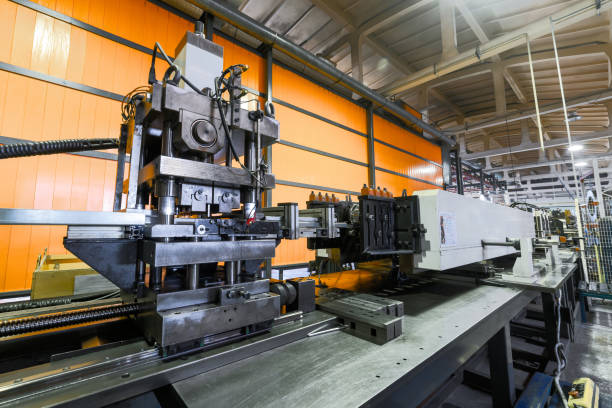Adaptive Pricing Models in Industrial Machinery
Revolutionizing equipment sales through dynamic, usage-based pricing strategies. As industrial machinery manufacturers face increasing competition and evolving customer demands, adaptive pricing models emerge as a game-changing approach to drive growth, foster customer loyalty, and optimize revenue streams.

The Evolution of Industrial Machinery Pricing
Historically, industrial machinery sales followed a straightforward model: customers purchased equipment outright, often with hefty upfront costs. This approach, while simple, presented challenges for both buyers and sellers. Customers faced significant capital expenditures and the risk of investing in equipment that might not fully meet their needs or become obsolete. Manufacturers, on the other hand, grappled with cyclical sales patterns and limited ongoing engagement with customers post-purchase.
As technology advanced and customer expectations shifted, the industry began exploring alternative models. Leasing options and financing plans emerged, offering more flexibility. However, these solutions still didn’t fully address the need for a truly adaptive, value-based pricing strategy.
Understanding Adaptive Pricing in Industrial Contexts
Adaptive pricing models in the industrial machinery sector represent a paradigm shift. Instead of a one-time sale, manufacturers offer equipment on a usage-based pricing model. This approach ties the cost directly to the value derived from the machinery, typically measured in operating hours, units produced, or other relevant metrics.
This model benefits customers by reducing upfront costs, aligning expenses with production, and ensuring access to the latest technology. For manufacturers, it provides a steady revenue stream, deepens customer relationships, and offers valuable data on equipment usage and performance.
Implementing Usage-Based Pricing Strategies
Transitioning to a usage-based pricing model requires careful planning and execution. Manufacturers must invest in IoT sensors and data analytics capabilities to accurately track equipment usage. Pricing structures need to be developed that balance profitability with customer value. This often involves tiered pricing plans or hybrid models that combine a base fee with usage-based charges.
Communication with customers is crucial during this transition. Sales teams need to be trained to articulate the benefits of the new model, addressing concerns about data privacy and long-term costs. Pilot programs with key customers can help refine the approach before a full-scale rollout.
Benefits and Challenges of Adaptive Pricing
The advantages of adaptive pricing models are numerous. For customers, it lowers barriers to entry, improves cash flow management, and ensures access to well-maintained, up-to-date equipment. Manufacturers benefit from more predictable revenue streams, increased customer loyalty, and valuable data insights that can inform product development and service offerings.
However, challenges exist. The shift requires significant upfront investment in technology and may initially impact cash flow as revenue recognition changes. There’s also the risk of cannibalization of traditional sales models. Managing these challenges requires a strategic approach and a long-term perspective on value creation.
Case Studies: Success Stories in Adaptive Pricing
Several pioneering companies have successfully implemented adaptive pricing models in the industrial machinery sector. For instance, a leading construction equipment manufacturer introduced a “pay-per-use” model for its excavators, charging customers based on the volume of earth moved. This approach not only attracted new customers who previously couldn’t afford the equipment but also provided the manufacturer with valuable data on machine performance and utilization patterns.
Another example comes from the printing industry, where a major player shifted from selling printers to charging based on the number of pages printed. This model aligned the company’s interests with those of its customers, incentivizing the development of more efficient, reliable machines.
Industrial Insights: Maximizing Value with Adaptive Pricing
- Conduct thorough market research to understand customer pain points and value perceptions
- Invest in robust IoT and data analytics infrastructure to enable accurate usage tracking
- Develop flexible pricing tiers that cater to different customer segments and usage patterns
- Implement strong data security measures to address customer concerns about privacy
- Train sales and support teams extensively on the new model to ensure effective communication with customers
- Consider offering hybrid models that combine elements of traditional sales with usage-based pricing to ease the transition
- Use data insights gained from usage tracking to inform product development and enhance customer service offerings
As the industrial machinery sector continues to evolve, adaptive pricing models represent a significant opportunity for manufacturers to enhance their value proposition and build stronger, more sustainable relationships with customers. By aligning costs with value and leveraging data insights, companies can drive innovation, improve customer satisfaction, and secure their position in an increasingly competitive market. The transition to these models requires careful planning and execution, but the potential rewards in terms of business growth and customer loyalty are substantial.





